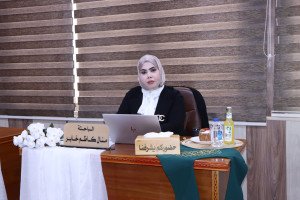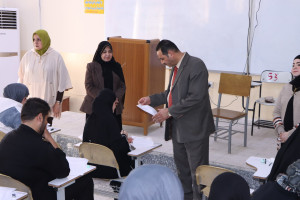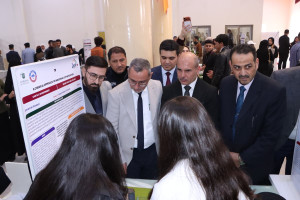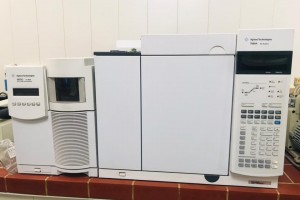
The College of Education for Pure Sciences, Department of Physics, University of Basra, discussed a master’s thesis on a theoretical study of the polarization accompanying the photon in the InGaAs/GaAs quantum point laser.
The thesis directed by the researcher (Hoda Hazem Nouri) included a study of the kinetics of polarization of the accompanying photon in the InGaAs/GaAs quantum dot laser, which operates at a wavelength of 1.3μm, based on a theoretical model consisting of a set of main equations Master Equations. Equations have been solved numerically and a theoretical simulation has been carried out using Mathematica program.
The results included studying the effect of changing the parameters of the system and control on the kinetics of the number of carriers of the pumping levels (p-shell) and emission levels (s-shell), in addition to the QD laser output. A comparison was made between the effect of these parameters on the polarization accompanying the photon and the number of photons and the number of carriers at the pumping and emission levels. Among these treadmill parameters: emitter number, pump pulse area coefficient, p-shell passive relaxation time coefficient, optical confinement coefficient, total cavity losses coefficient and effective electron relaxation time coefficient. The effect of the treatments was categorized between what had a positive or negative impact in enhancing the dynamics of the studied variables. As well as determining some values of the critical points at which the effect changes some of the parameters from one effect to the opposite effect.
The aim of the thesis is to study the photon co-polarization in (InGaAs/GaAs) semiconducting quantum dot lasers, and the effect that some system parameters play on controlling the time behavior of the photon co-polarization and on the number of carriers in the pumping (p-shell) and emission (s-shell) levels. ) and the number of photons, including (optical confinement coefficient, total cavity losses, effective and passive relaxation time, number of emitters, area of the pump pulse, duration of the pump pulse








